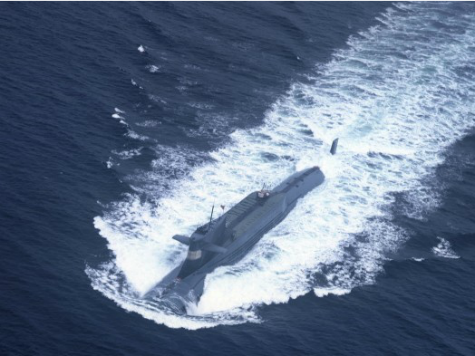China’s Harbin Institute of Technology’s Complex Flow and Heat Transfer Lab announced it has the ability to apply supercavitation technology, which already allows some torpedoes to travel at up to 370 mph, to submarines that could theoretically travel up to 3,600 mph while underwater, according to the South China Morning Post.
Modern submarines value stealth and speed, but since water produces more friction on an object than air, underwater drag creates vapour cavities in the form of bubbles known as cavitation. This is why objects moving underwater usually create a friction noise signature and move more slowly than airplanes.
The Soviet Union in the late 1980s invented a torpedo called “Shakval” that was able to reach speeds of 230 mph or more, or about six times the speed of conventional torpedoes. The concept was based on the alleged phenomenon of the Bermuda Triangle, where it is thought that massed bubbles released from the ocean bed render the surface water unable to support the weight of a passing ship, causing it to sink suddenly and without warning.
A stream of bubbles is produced inside the Shakval torpedo and pumped ahead of the warhead to surround it in a jacket of air bubbles. This drastically reduced water resistance allows the torpedo to “fly inside a gas bubble” created through “supercavitation.” The Shakval is capable of traveling straight at 200 mph but is incapable of being steered with a conventional rudder, which would be inside the bubble and unable to create any friction with water.
In 1987, a Canadian 6,166-ton Coast Guard ice-breaker featured high-pressure side jets located along and below the water line. This “air bubbler” system of jets reduced hull friction during ice-breaking operations, helped break up the ice, and could be used as side thrusters for maneuvering.
New technology developed by the Harbin Institute scientists supposedly “showers” their prototype supercavitation submarine with a special liquid membrane to significantly reduce the water drag on the vessel at low speed. After reaching a speed of 47 mph or more, the vessel could enter the supercavitation state. The man-made liquid membrane on the vessel surface helps steer as nozzle directional controls create different levels of friction on areas of the submarine to create turns.
“Our method is different from any other approach, such as vector propulsion,” or thrust created by an engine, Li Fengchen, professor of fluid machinery and engineering, told the SCMP. “By combining liquid-membrane technology with supercavitation, we can significantly reduce the launch challenges and make cruising control easier.”
Li acknowledged that there are many technical problems that needed to be solved before supersonic submarine travel could become feasible. In addition to the control issue, a powerful underwater rocket engine still had to be developed to give the vessel a longer range. The range of the Russian Shakval torpedo is only 4-8 miles. Li said the supercavitation technology could benefit civilian underwater transport someday, but he admitted that China is focused on military uses.
The United States is known to be developing vessels and weapons that employ supercavitation technology. Technology reportedly under development at the Office of Naval Research includes a 6.25-inch-diameter self-protection weapon under study for a supercavitation counter-torpedo to defend surface ships and submarines.
The U.S. Navy Advanced High Speed Underwater Munition program has already demonstrated the effectiveness of supercavitation high-speed underwater bullets. When fired from an underwater gun, these projectiles have successfully broken the 767 mph speed of sound in water. Supercavitation bullets have also been developed for use in mine-clearance when fired from a helicopter.

COMMENTS
Please let us know if you're having issues with commenting.